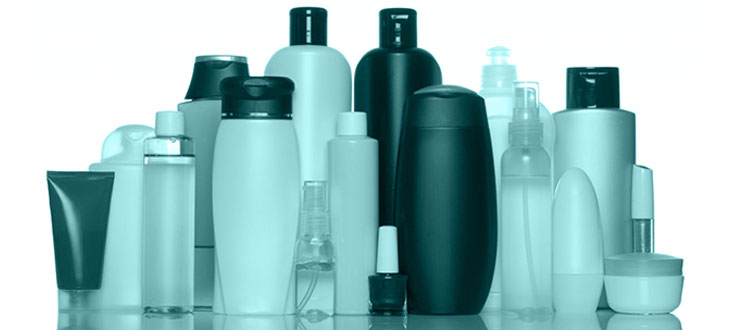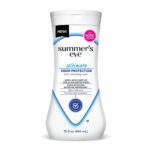CIR poised to declare parabens safe for use in cosmetics…again
 |
| Alex Scranton Director of Science and Research |
11.28.2018 CIR UPDATE: Based on comments received, the CIR delayed their final decision on parabens until their April 2019 meeting. Specifically, as we recommended, they have agreed to recalculate the margin of safety using more conservative assumptions, and to provide better justifications for the assumptions they choose to use. They chose to dismiss our concerns on the hazards of parabens from vaginally applied products, however, claiming the studies we provided were either irrelevant or improperly designed. If you would like to read their official response to us, it is available here. There will be an additional opportunity to provide input to the CIR on parabens before their April 2019 meeting – so stay tuned! Click here to read more on the CIR’s upcoming review on “Aerosols Precedents” in cosmetics.
———————
The Cosmetic Ingredient Review (CIR) is meeting on September 24th and 25th, to discuss their latest safety assessment of parabens in cosmetics.
And despite the consensus of numerous researchers around the world concerned about the health impacts of paraben exposure, the CIR seems set, once again, on declaring the safety of these toxic preservatives to keep them on the U.S. market.
They have been quite open (according to transcripts of their meetings) about their motivations for declaring parabens to be safe.
For example, in their meeting in April 2016, one panel member discussed the fact that the European Union was restricting parabens, which, he thought, needed a response from the American side.
“…Europe is relooking at parabens, which is the same reason, I think, we need to look at adding the ingredient … to our priority list so it may be nice to come back and reiterate the U.S. position on parabens, because I am not sure what the Europeans are going to end up doing with it but there is a strong movement among certain groups in the EU to significantly restrict them…”
Once the EU has passed a regulation limiting this, it’s really too late.” [1]
In June 2017, a CIR panel member added his thoughts and concerns to the end of their discussion on parabens.
“Any other comments?…”
“Just that we need good preservatives and so I’m going to try (to protect?) preservatives that are probably of high value and not dangerous.”[2]
And again most recently in March 2018, another member reiterated similar concerns,
“I think we need effective preservatives. I’m not anxious — definitely not anxious to see any disappear at the moment from what we’ve got left.”[3]
Certainly, the rapidly decreasing number of preservatives available to cosmetic manufacturers is a real problem. If we want cosmetics with a reasonable shelf life, effective preservative chemicals are a key way to achieve that. But keeping unsafe preservatives on the market for convenience sake isn’t the answer. And allowing parabens to stay on the market won’t drive the innovation in safer preservation that we really need. The latest health research seems to be telling us that parabens never should have been introduced as preservatives in the first place. And ideally, it is the role of the Cosmetic Ingredient Review to look objectively at the data and make that determination. It’s not actually their role to “protect” anything for the industry.
To help counteract the undue influence of industry on the CIR, Women’s Voices for the Earth recently submitted a third round of comments on their safety assessment of parabens, aiming to bring attention to some key issues and concerns that (so far) are not being fully addressed by the CIR. We have asked them to:
- Address the issue of parabens in vaginally applied products, and the unique adverse effects they can have on both vaginal skin cells and sperm.
- Reassess their prior conclusions that parabens don’t accumulate in the body to better reflect new understandings about the potential long term effects of paraben exposure.
- Acknowledge the vast body of literature that clearly indicates that the main contributor to our daily paraben exposure is the use of cosmetic products, not food, medicines or other sources which contribute significantly less parabens into our bodies. There is a tendency of the CIR to dismiss harmful effects of chemicals as irrelevant because they might not be able to attribute the exposure to cosmetics use. (But in the case of parabens the data is really pretty strong that cosmetics is by and large how we are exposed to them.) And lastly, we have asked them to…
- Be even more conservative and precautionary about how they are calculating what they consider to be a safe level of parabens.
To their credit, the CIR did recently revise their risk calculations acknowledging that new data indicate that the “no-effect level” is lower than they had previously assumed. However, it is concerning that in order to decide on an appropriate “no-effect level” they chose to dismiss a peer-reviewed study which showed very low levels of parabens affecting rats, instead choosing a level about 16 times higher, which was recommended as a more appropriate “conservative” level by a guest expert they invited to help them better understand the science. (Turns out their guest expert is a toxicologist for Procter & Gamble.) Sigh.
If you want all the nitty gritty (and kind of wonky) details you can read the CIR’s latest draft safety assessment of parabens here. And our most recent set of comments to the CIR can be read here.
If you want to add your two cents, the CIR has an open public comment process. Anyone can submit written comments to cirinfo@cir-safety.org.
[1] Cosmetic Ingredient Review (2016) Cosmetic Ingredient Review Expert Panel 138th Meeting (April 1, 2016) Transcript. Available upon request from Cosmetic Ingredient Review.
[2] Cosmetic Ingredient Review (2017) Cosmetic Ingredient Review Expert Panel 143th Meeting (June 12-13 2017) Transcript. Available at: https://www.cir-safety.org/sites/default/files/Parabens.pdf
[3] Cosmetic Ingredient Review (2018) Cosmetic Ingredient Review Expert Panel 146th Meeting (March 5-6 2018) Transcript. Available at: https://www.cir-safety.org/sites/default/files/Parabens.pdf






